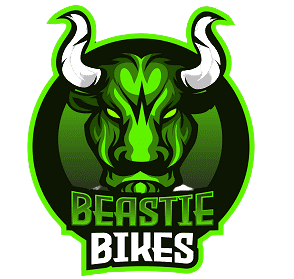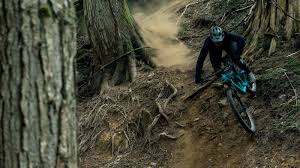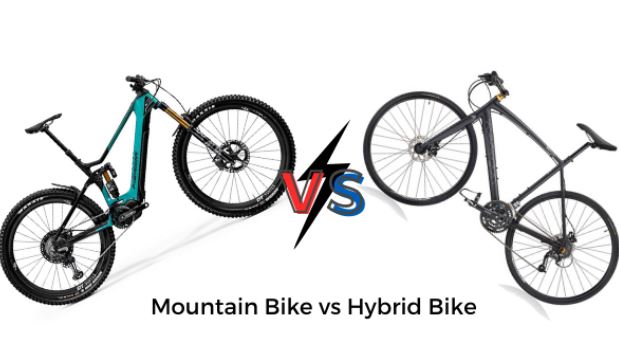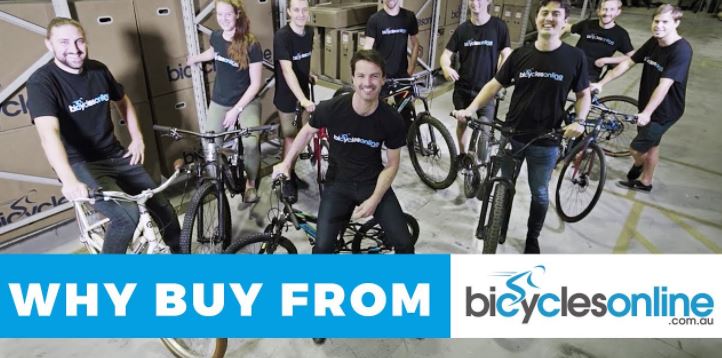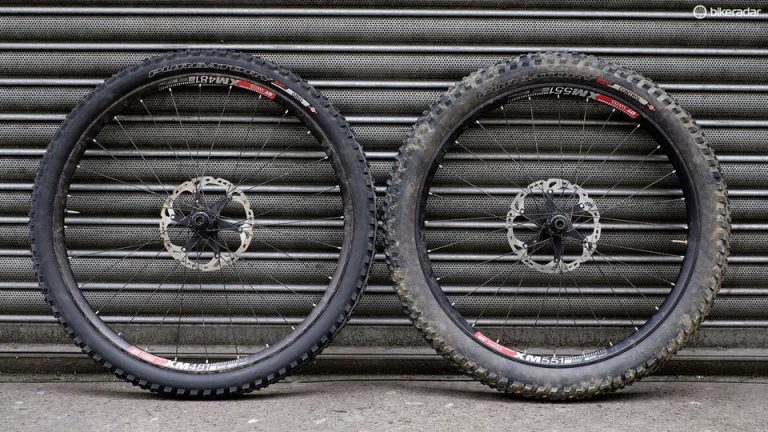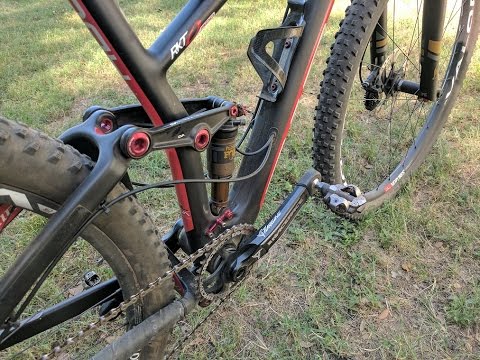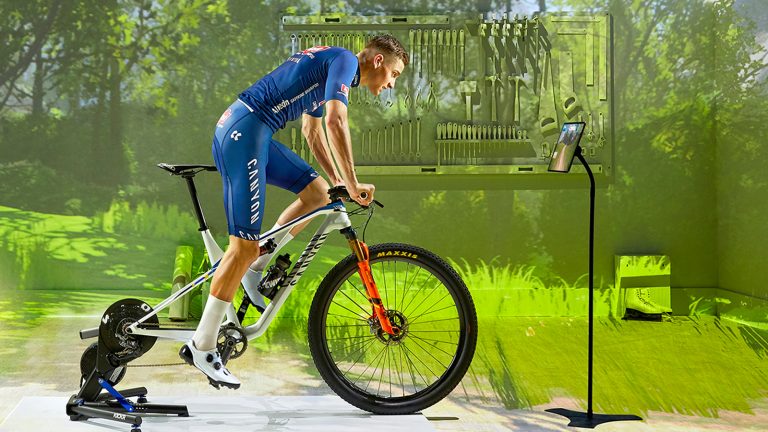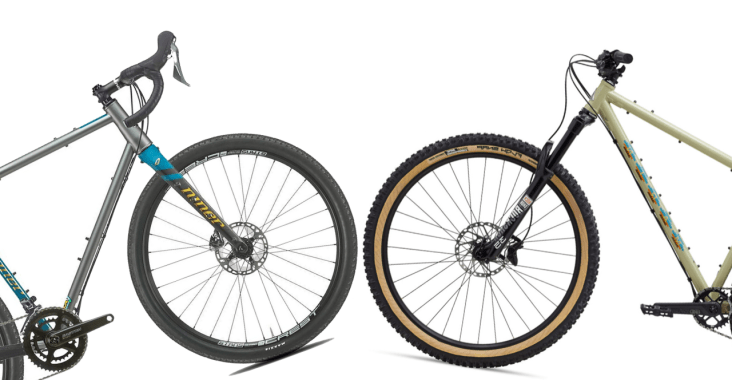Enduro Mountain Biking – What Is It?
Enduro Mountain Bikes (Where To Purchase In Australia)
If you don't have time to read the full article, here is our quick review.
Enduro mountain biking has become very popular in the last few years in Australia. We take a look at what it it, and how the bikes differ from other MTBs. Below you can checkout where to purchase them if you are in the market right now! (Available at Bicyclesonline.com.au)
Overall Rating: 4/5 stars
Quality
RIDE
cost
PRICE RANGE (at time of writing)
$800 – $5000
In the past, Enduro bikes were called “all-mountain” bikes, and this category now sits on top of the trail bikes category but below bikes specifically designed for freeride or downhill use. Enduro racing primarily focuses on timed descents of a technical nature with no time limit for sections where the rider climbs to the next step. These downhill bikes offer characteristics and qualities for both the mountain bike and the Enduro bike.
Mountain biking isn't quite the same as Enduro racing, and this type of riding requires good maneuverability, great stability, excellent geometry, and controlled suspension travel. These are all essential to boost confidence and help the riders with control. However, climbing is a huge concern, too. That means the Enduro bike has to pedal correctly, be geared properly, and have a low weight. It's quite a lot to pack into a trail bike.
While racing is fun, geometry has to be focused on for the job at hand. There must also be good weight distribution, handling, and balance for the steep uphill. On top of that, it can't be too lazy or be much of a slacker when pressing on into the faster singletrack sections and descents.
Suspension travel is going to be between 170 to 160mm for the front and rear with a 650B/27.5-inch wheel. It could also be 150 to 155mm with a 29-inch wheel and air springs for the front and rear in many cases. That keeps the weight lower and helps you fine-tune the spring rates on the technical course.
Though this is an exciting world, the races can be over hard terrain. Riders need plenty of discipline with the right suspension and set-up. That way, you get the best out of the mountain bike, such as tire choices, bars and stem, suspension, pressure, and seat height. They all contribute to getting the most from your Enduro bike, whether you're going up or down a hill.
Should You Buy An Enduro Bike?
If you've got plans for gravity stage racing, then there is no question that you want an Enduro bike on the list. They're very versatile machines. In fact, this type of trail bike is going to help you go farther on local DH trails while hitting tough runs at the trail bike park. However, these Enduro bikes are also efficient enough to go for a four-hour trail bike ride.
They tend to be slacker and have a low geometry, but they also have sturdy wheels and a longer wheelbase. That way, these trail bikes give you everything you need. On a tame terrain, you can put in more determination and boost your fitness and muscle levels, even if the weight of the mountain bike isn't too far from the trail bike. It's easy to over-bike, though, so you want to find an updated mountain bike for your racing needs.
Typically, the rider finds that the steep head angle isn't too much for them when riding. To get a smooth ride on your cross-country trip, there are certain things to look for. We're going to talk more about the angle of the head and how to have more fun while mountain biking.
How Much Should A Person Spend For An Enduro Bike?
To get the best performance, you need to use session technical descents or to race Enduro, but at the same time, you're pedaling with efficiency. This is asking for a lot here, so the price you pay for your Enduro bike isn't likely to be cheap, even on the budget side.
Throughout the course, you are going to be going downhill with plenty of descents on the race. Therefore, you want a smooth bike ride, and suspension travel plays a part here. On top of that, the angle of the head can help or hinder your racing abilities.
The Enduro bikes are designed for races on trails, so the wheels and frame have to be just right, too. It's always a good idea to consider your budget. Try to buy an Enduro bike that meets your cross-country and Enduro racing needs without going overboard. As you progress with your mountain biking endeavors, you can save up and spend more to get a better Enduro mountain bike over time.
What To Look For In Enduro Bikes?
We've finally covered the basics for Enduro riders, so now is the time to figure out what parts you need in Enduro bikes. You're going to be on the trails and are going to travel extensively. Therefore, you want the ride to be as smooth as possible.
Find out how the bottom bracket affects the ride and what you need for your Enduro bike.
Frame
The frame is at the heart of your trail bike, and it's the primary cost you pay when building an Enduro mountain bike. You can find carbon fiber or aluminum materials, and there's often a carbon frame, while aluminum is used for the stays on the rear swingarm of the Enduro bike. If speed is your game, carbon frames are often the best choice for mountain biking. Single- and multi-pivot designs are available on Enduro bikes, and they drive the rear shock. That means there are good and bad points to each, and some brands even include a warranty on bearings for their bikes.
Geometry and sizing are essential, and this is where some of the trail bikes shine, and others fail. If you get this right, you're going to have a bike that meets your needs. Choose the right size for the frame, and you're doing well.
This is one area where it can be helpful to buy your mountain bike from a bike shop. The rider can test it out by sitting on it and going for a ride, too. However, some brands don't sell in a shop but have demo days for the Enduro bikes so that you can try them.
Enduro bikes are often slacker with the head angle and longer in the wheelbase than a traditional trail bike. They usually run on the short stem with smaller handlebars. On top of that, you have to focus on the tube length (the top tube). This tube is often designed around a smaller setup. The head angle is in the 64- to 66-degree area, and the wheelbase is stable and long at 1200mm+. Such a head angle and dimensions are going to add up to you having an Enduro bike that climbs uphill with ease.
Suspension
The suspension on the mountain bike is essential for having a smooth ride. You are going to travel over rough and smooth terrain, so you want a suspension system that gives you the performance and balance you need.
Every rider needs to think about a suspension that's easy to control with more travel in the rear and front so that it does what you need it to do when Enduro racing.
Forks
Having a downhill bike is important for riders. The single-crown travel fork is the top choice for the front wheel on your mountain bike, with a wheel size of 27.5 inches. It's a bit less on the longer travel 29-inch options. There's a bolt that goes through the axle, which adds more steering authority and can stiffen the fork of your Enduro bike. You also get a tapered steerer. such modern travel forks crash through any terrain that most downhill bikes couldn't deal with.
Tuneable air springs are now standard, and there are rebound and compression damping adjustments to help control the feel and support of the fork.
Rear Shock
A well-designed suspension for your Enduro frame can't do much without a quality rear shock and the right tune. To balance the geometry of the bikes, there's usually a rear shock from RockShox or Fox, but X-Fusion and Bos are also popular. Air springs are the top choice for most because it keeps the weight low when climbing.
Wheels
When focused on the wheels, most Enduro bikes offer a 27.5-inch wheel size, but there are some 29-inch bikes available. You're going to get some tough tube rims, which are important because the tube takes much of the abuse. This is especially true if you're new to Enduro racing and developing your skills. The tube rims are often wider on the 27.5 -inch Enduro bike, which helps with performing shape. There are tubeless versions, too.
Tires
Most riders prefer not to have a tube for the tires, but a tube tire is still a popular choice for most mountain bike varieties. If you plan to race, you may want to opt-out of a tube version and go with tubeless casings. Remember, during the race, the wheels and tires take a huge beating, especially during dry conditions. Speed is the goal for mountain bike races, so it's important to have a low profile tread on the rear with an aggressive pattern on the front wheel.
Brakes
For racing, you are going to want a lightweight two- or four-piston hydraulic brakes, which come standard on most Enduro bikes. Rotor sizes are about 180mm or a bit more.
Gears
Enduro bike transmissions now use the single ring setup for racing. There's a wider range cassette toward the bank with a single chain-ring at the front and a clutch rear mech. These are low noise and can give you the speed you need to race on any terrain.
Controls
It's important to get the stem and bars sorted for better control and comfort when riding. There's bound to be trial and error when you fine-tune the setup on your Enduro bike. The handlebars are often made of aluminum, but some of them use high-end carbon. Regardless, they're going to be between 750 and 800mm wide.
They fit on a shorter and stiff stem to offer more handling and stability, which goes with the slack geometry of modern Enduro bike options. You're likely to see more speed with such a mountain bike.
Dropper Post Seat
The dropper seat post is the most essential aspect of your Enduro bike. The dropper post helps you remotely adjust the saddle height while you're climbing uphill, dropping into a descent, or attacking the technical singletrack.
Pedals
Most race bikes, use clips or flats for the pedals, and riders tend to like the clip version. When riding, it prevents your feet from sliding out of the bike pedals.
Where to Buy One?
There are a few choices for where to buy your trail bike. Most people go to a bike shop, but there are internet retailers out there too.
With any downhill bike, you have to remember that it's a specialist bike with more technology and features about it. If you want to get technical (and you do), there's no way that you can get the right trail bike yourself without help. You can turn to your riding friends or go to a good bike shop.
A reputable shop is going to have people to help you test the trail bike and focus on the suspension, geometry needs, and more. These trail bikes are designed throughout the world to race, and there are various brands out there.
You've got to be able to test the bike out to make sure it fits your needs. Ultimately, we find it better to test it at a shop or use the demo days for online retailers.
FAQs
What Is the Difference Between Enduro and Trail MTB?
An Enduro bike often has a better suspension than a trail bike. You're also going to find that it has a slacker range of travel on the trails with a higher head angle.
On top of that, the Enduro bike has higher bottom brackets than the trail bikes. Trail bikes rarely travel as much, so they tend to have a lower bottom bracket. Still, that doesn't account for the tire sag, shocks, and the form. Still, the average Enduro bike offers bottom brackets that are 4mm higher than traditional trail bikes.
What Are Enduro Mountain Bikes Used For?
An Enduro trail bike is often used for downhill racing, but there's also an uphill climb that could be quite steep. It depends on the trail you ride, but most of these downhill bikes have a slacker head angle to make it easy for you to move along the trails effortlessly.
Typically, the trail is going to have ups and downs and could be over rough terrain. These bikes are designed for racing, so you need the physical strength required for long-distance traveling on top of the mental stamina required for XC-style races.
What's the Difference Between All-Mountain and Enduro?
All-mountain bikes are the centerpiece for the Enduro race format because climbing is necessary, but the downhill sections of the trail are the only ones scored and timed. They generally run on a specific type of trail, and you're sure to have a slacker head angle and a higher bottom bracket for travel.
These bikes aren't that much different from the mountain bikes or the trails you ride on. However, they do have more advanced parts and features.
What Is the Difference Between XC and Enduro?
Euro trails and bikes are often more technical than the XC bikes. XC trails have larger jump sections and drops with a lower bottom bracket on the XC bikes. Typically, the bike trail is the most important difference, and you're going to need a bike that focuses on full suspension with wide tires, longer travel, and more.
This trail bike is an exciting option for most people who like to race, but there are a few differences.
Conclusion
Those who want to put a trail bike to the test are sure to appreciate the Endo bike. Though you need to find the right trail to go on, they are a great way to test your skills and physical endurance.
Throughout the course of your search, you're bound to find a range of exciting bikes out there. Going on the trail can be fun, but only when you have the right bike.
